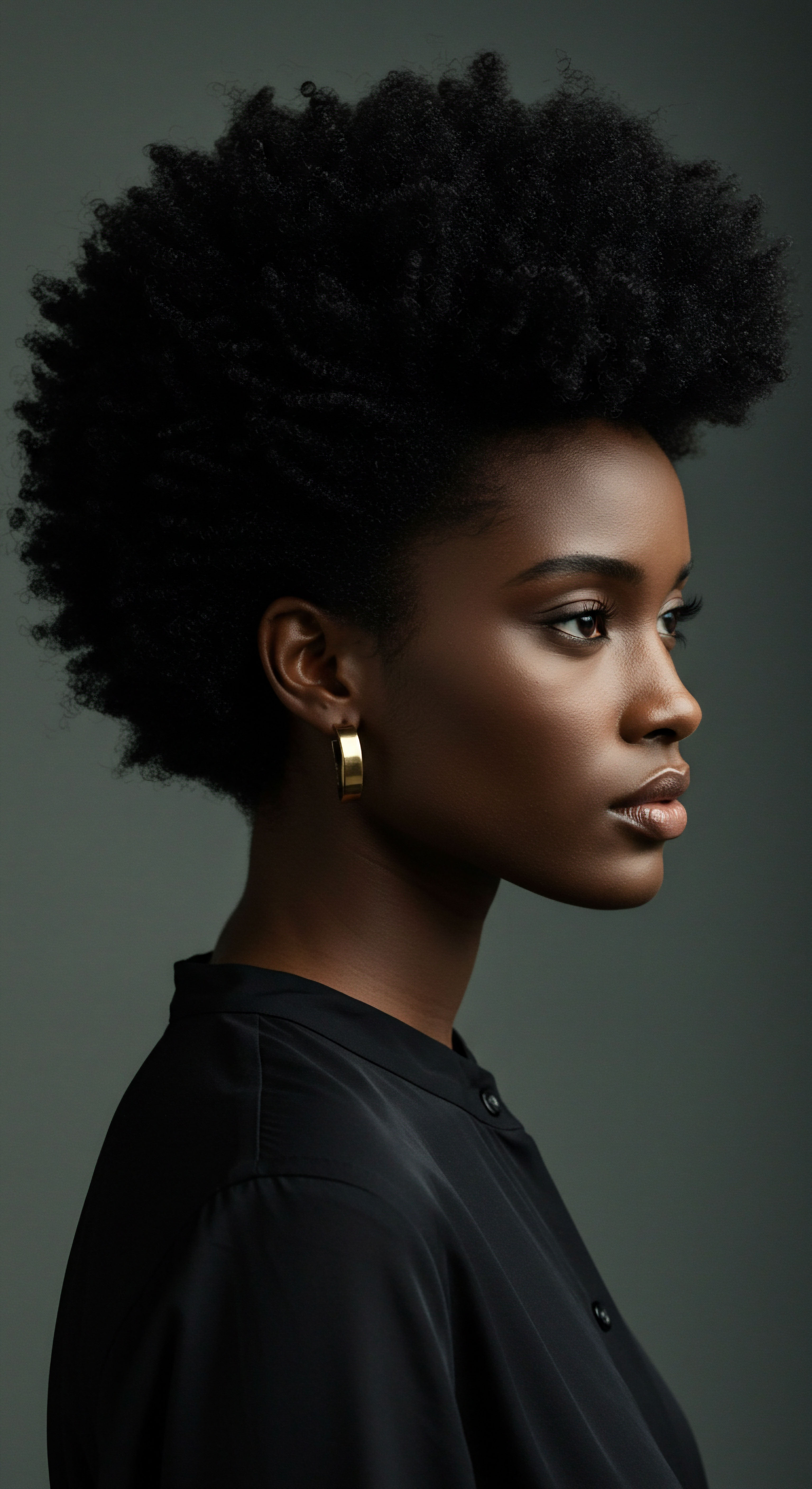
Roots
Our very existence, from the rhythmic pulse of our breath to the quiet renewal of our skin, unfolds in cycles. We are beings attuned to the turning of the day, the gentle pull of gravity, and the profound quiet of slumber. Within this grand orchestration, our hair, particularly textured hair, holds its own profound narrative, deeply connected to these fundamental rhythms.
How, then, does the nightly descent into rest truly touch the vibrant life of our hair follicles, those tiny architects of every strand? It is a question that invites us to look beyond the surface, to appreciate the unseen foundations that support our crowns.
The vitality of our hair stems from its very beginnings, nestled beneath the scalp within structures called Hair Follicles. These miniature organs are far more than simple anchors; they are dynamic factories, each operating on its own internal clock, diligently producing hair fibers. For textured hair, this intricate dance is particularly noteworthy, as the unique curl patterns and structural integrity depend heavily on the consistent, healthy functioning of these foundational units.

The Hair Follicle’s Inner World
A hair follicle comprises several distinct parts, each playing a vital role in hair production and maintenance. The Dermal Papilla, a small, cone-shaped structure at the base, contains specialized cells and a rich blood supply, serving as the communication hub that directs hair growth. Surrounding it is the hair matrix, a region of rapidly dividing cells that produce the hair shaft.
Above these lie the inner and outer root sheaths, protective layers that guide the growing hair upwards. The health of these components dictates the strength, thickness, and resilience of each strand, from its nascent beginnings to its full expression.
Understanding the anatomy provides a lens through which to view the impact of internal processes. The cellular activity within the follicle is ceaseless, even when we are still. This continuous operation relies on a steady supply of nutrients, oxygen, and precise hormonal signals, all of which are significantly influenced by our state of rest.
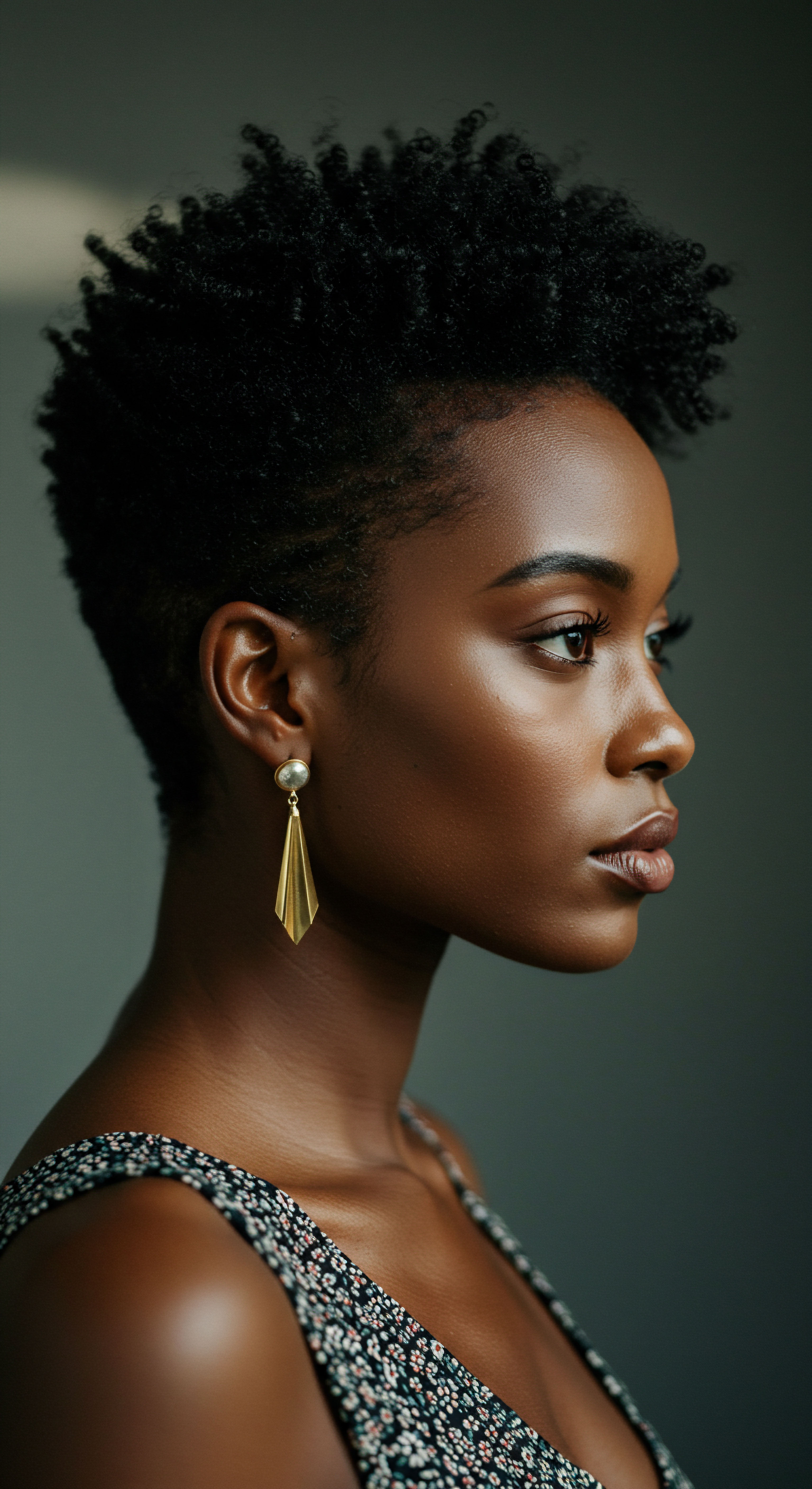
Hair Growth Cycles and Their Rhythmic Dance
Hair growth follows a cyclical pattern, a biological rhythm that repeats throughout our lives. This cycle consists of three main phases:
- Anagen ❉ This is the active growth phase, where hair cells divide rapidly, and the hair shaft lengthens. This phase can last for several years, determining the maximum length a hair can reach.
- Catagen ❉ A transitional phase, lasting a few weeks, where hair growth ceases, and the follicle shrinks.
- Telogen ❉ The resting phase, typically lasting a few months, during which the hair remains in the follicle but is dormant. Towards the end of this phase, the old hair is shed, making way for a new anagen hair.
Disruptions to this delicate rhythm can manifest as thinning, reduced growth, or excessive shedding. Our nightly rest is a silent partner in maintaining the smooth progression of these phases, ensuring that follicles receive the signals and resources needed to transition effectively.
The hair follicle, a marvel of biological design, operates on intrinsic rhythms that are profoundly influenced by our sleep patterns.

The Silent Repair of the Night
During the deepest stages of slumber, our bodies engage in extensive repair and regeneration. This is a time when energy is redirected from active daily functions towards cellular restoration. For hair follicles, this means an optimal environment for growth and recovery.
Growth hormones, essential for cell regeneration, are released in abundance during these hours, directly supporting the metabolic needs of the hair matrix cells. A well-rested body provides the fertile ground for robust hair production, helping to maintain the hair’s natural density and vigor.
Furthermore, adequate rest contributes to balanced circulation. Blood flow to the scalp increases during sleep, ensuring that vital nutrients and oxygen reach the active hair follicles. This consistent supply is fundamental for the cells to perform their complex tasks of building and maintaining hair fibers. Without this nightly rejuvenation, the microscopic world within our follicles can experience subtle shifts, gradually affecting the outward appearance and resilience of our strands.

Ritual
Having explored the foundational connection between our rest and the very beginnings of our hair, we now turn our gaze to the daily practices that shape this relationship. The way we prepare for our nightly repose, the gentle care we extend to our strands before we drift off, these are not mere routines. They are rituals, quiet acts of reverence for our hair’s wellness, deeply intertwined with the restorative power of sleep.
How, then, do these mindful sleep practices shield our hair’s innate vibrancy? This segment invites us to consider the actionable steps, the thoughtful gestures that transform a simple bedtime into a sanctuary for our hair.

Preparing Strands for Slumber
The hours spent in sleep are a significant portion of our lives, and during this time, our hair can be vulnerable to friction, tangling, and breakage. Thoughtful preparation before bed can significantly reduce these risks. For textured hair, which often possesses a more delicate structure and is prone to dryness, this pre-sleep ritual holds even greater weight.
Consider a gentle detangling session, perhaps with fingers or a wide-tooth comb, working through any knots that accumulated during the day. Applying a light leave-in conditioner or a touch of natural oil can seal in moisture, creating a protective barrier against dehydration that can occur overnight. These simple steps create a smooth surface, reducing the potential for snagging on pillowcases or other surfaces, which can lead to weakened strands and compromised follicle health over time.
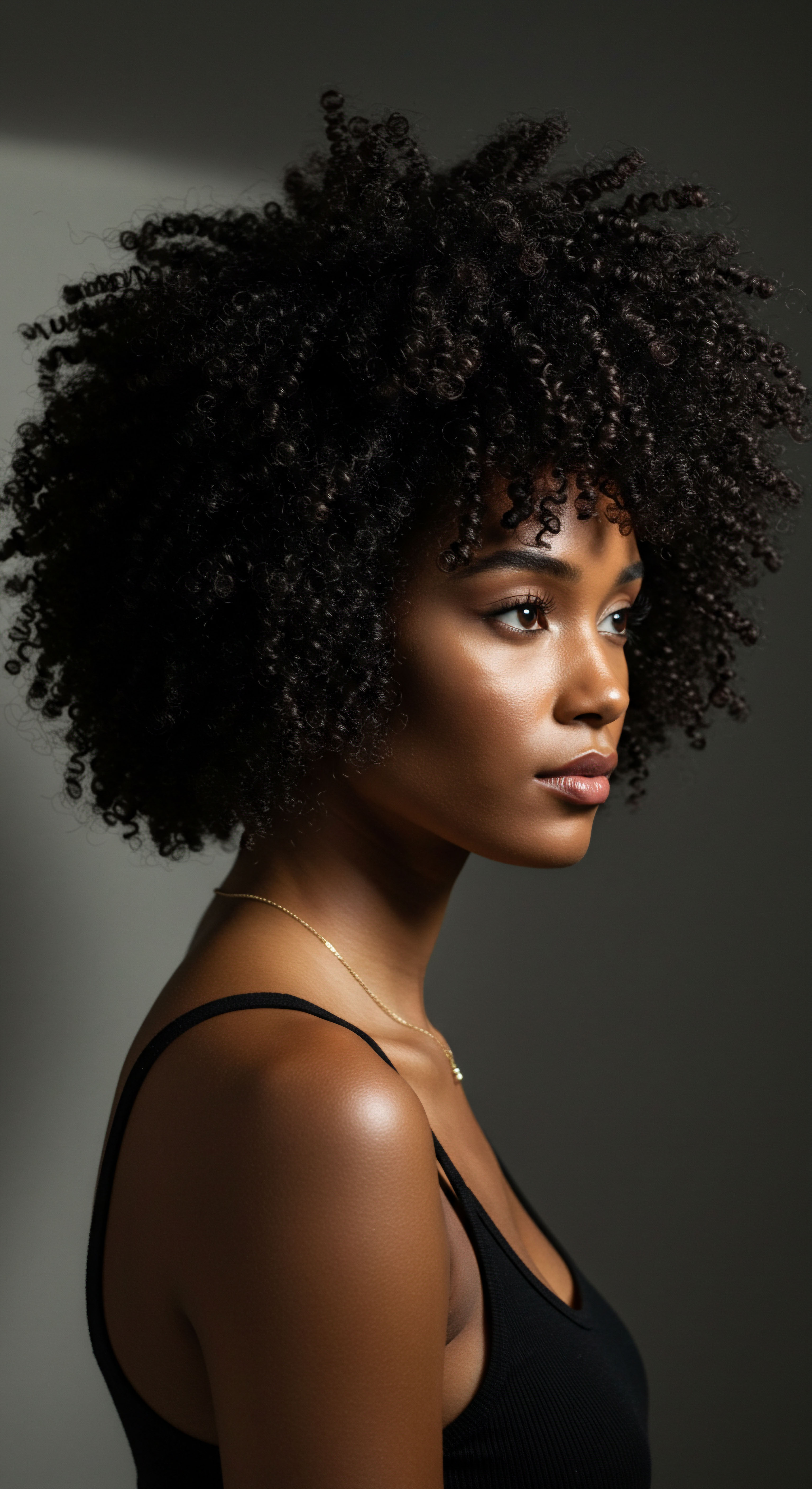
The Nighttime Sanctuary Essential Sleep Protection
Protecting hair during sleep extends beyond product application; it involves creating a physical barrier. The friction between hair and bedding, especially cotton pillowcases, can cause significant wear and tear on the hair shaft, leading to frizz, breakage, and even thinning over time. This constant mechanical stress can indirectly affect the follicle by creating an unhealthy environment on the scalp, potentially impeding optimal growth.
This is where Bonnets, Scarves, and Satin Pillowcases step in as essential guardians. These accessories offer a smooth, low-friction surface that allows hair to glide freely, minimizing snags and preserving moisture. For textured hair, which naturally craves moisture and can be more susceptible to mechanical damage, these protective measures are not merely an indulgence; they are a fundamental component of a healthy regimen. They shield the hair from the dehydrating effects of absorbent fabrics and prevent the structural integrity of the strands from being compromised.
Mindful nighttime rituals, from gentle detangling to protective coverings, safeguard our hair against mechanical stress and moisture loss.
The choice of material matters profoundly. Unlike cotton, satin and silk do not absorb moisture from the hair, allowing products to remain where they are most effective. This preservation of moisture helps maintain the hair’s elasticity and strength, directly supporting the overall health of the hair follicle by reducing the burden of repair.
| Protection Method Satin Pillowcase |
| Primary Benefit for Hair Reduces friction, minimizes frizz and breakage |
| Impact on Follicle Health Supports scalp health by reducing mechanical stress |
| Protection Method Silk Bonnet |
| Primary Benefit for Hair Preserves moisture, protects curl pattern |
| Impact on Follicle Health Maintains ideal scalp environment for growth |
| Protection Method Loose Hairstyles |
| Primary Benefit for Hair Prevents tension on roots |
| Impact on Follicle Health Avoids stress-induced thinning near follicles |
| Protection Method These methods collectively promote a more conducive environment for healthy hair follicle function. |

Sleep Positions and Scalp Circulation
Even our sleeping position can subtly influence hair health. While the direct link to follicle health is less pronounced than other factors, consistent pressure on certain areas of the scalp can potentially impede localized circulation over very long periods. Sleeping on one’s back, for instance, can distribute pressure more evenly across the scalp compared to consistently sleeping on one side.
While a drastic change in sleep position may not be necessary for most, an awareness of how we rest our heads can contribute to a holistic approach to hair wellness. Coupled with the use of satin or silk, the impact of sleep position becomes less of a concern, as the hair is already shielded from direct friction and compression. The aim is always to reduce any unnecessary strain on the hair and scalp, allowing the follicles to operate in an undisturbed state of renewal.

Relay
Having explored the fundamental connection and the practical rituals that shape our hair’s vitality, we now turn to a more profound understanding, one that delves into the intricate biological signals and broader environmental cues that influence our hair’s very being. How does the delicate interplay of our internal clock and external rhythms truly govern the resilience of our hair follicles? This exploration ventures beyond the obvious, seeking to illuminate the sophisticated, interconnected systems that underpin hair health, drawing upon research that may challenge common perceptions and offer a deeper appreciation for our body’s silent orchestration.
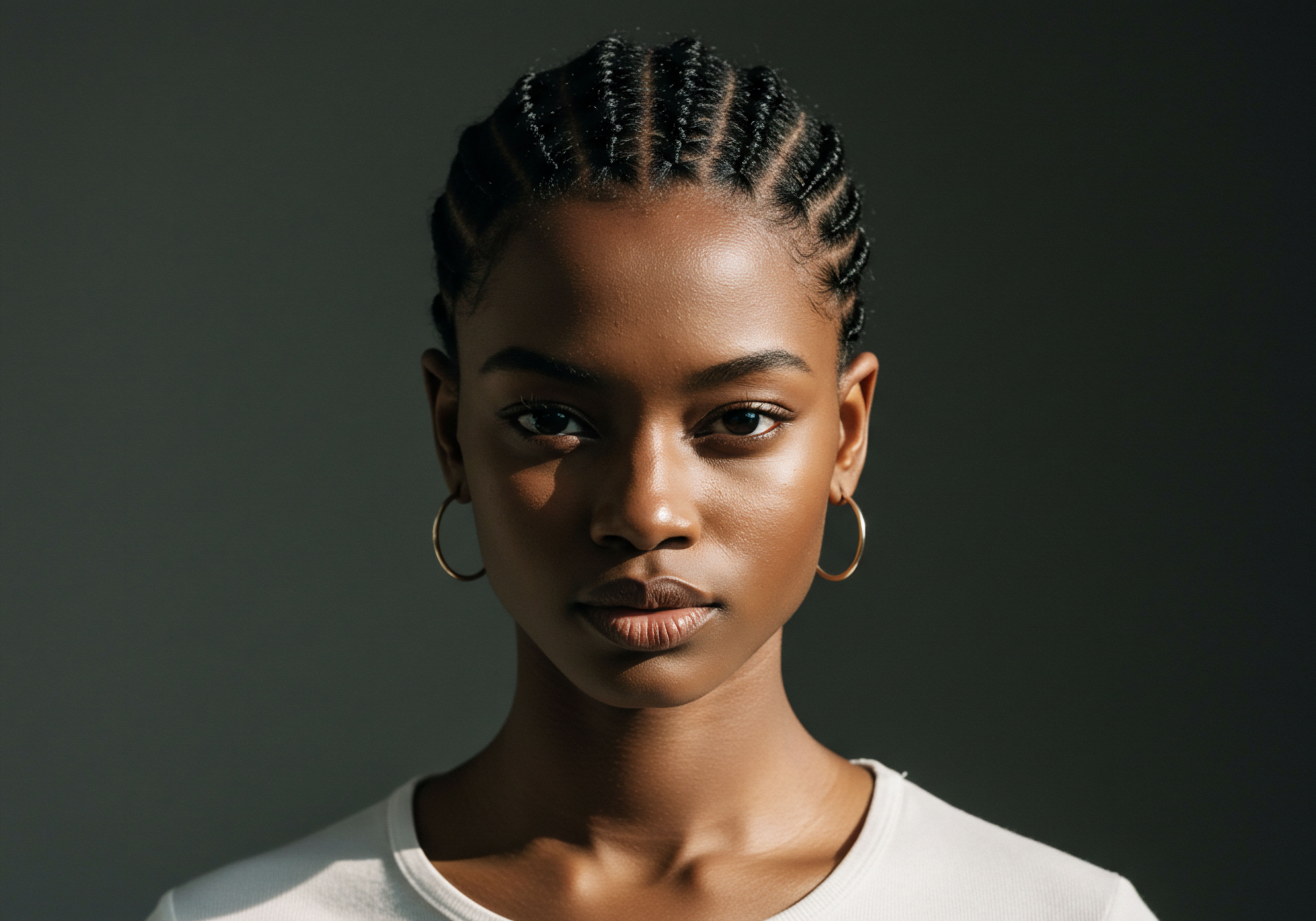
The Body’s Internal Clock and Hair’s Rhythm
Our bodies possess a sophisticated internal timekeeper, the Circadian Clock, which orchestrates a vast array of physiological processes over approximately a 24-hour cycle. This biological rhythm, influenced by light and darkness, extends its reach to nearly every cell in our body, including those within our hair follicles. The hair growth cycle itself, while longer than 24 hours, is intricately linked to these daily oscillations.
Research has unveiled that specific Clock Genes, such as BMAL1 and PER1, are not only expressed within hair follicles but also play a significant regulatory role in the hair growth cycle. These genes influence the proliferation and differentiation of hair follicle stem cells, which are the engines of hair regeneration. The continuous ability to grow new hair throughout life relies on these stem cells and their precise regulation by the circadian rhythm.
The hair follicle’s ability to regenerate new strands is intimately tied to the body’s circadian clock, a profound link often overlooked.

Can Disruptions to Our Inner Clock Diminish Hair’s Vitality?
Indeed, disruptions to our internal clock can have a tangible impact on hair follicle function. Consider the reality faced by individuals whose sleep-wake cycles are chronically misaligned, such as Shift Workers. Their bodies are frequently operating against their natural circadian rhythms, leading to a cascade of internal dysregulation. A compelling 2019 study published in Cell Reports revealed a direct link between circadian rhythm disruptions and a decreased activity of stem cells within the hair follicles.
This research suggests that when our body’s internal clock is thrown out of sync, the regenerative capacity of these crucial hair-producing stem cells can be compromised over time. The consequence may be hair that appears thinner, weaker, and less able to recover its full vitality. This goes beyond general stress, pointing to a specific molecular mechanism where consistent, regular sleep is paramount for cellular programming within the follicle.
This disruption impacts the precise timing of cellular events within the follicle, potentially delaying the entry into the active growth (anagen) phase or accelerating the transition to the resting (telogen) phase. The result can be a cumulative effect, where hair sheds more readily, and new growth struggles to keep pace, gradually altering the overall density and appearance of the hair. The evidence points to the profound importance of respecting our body’s inherent rhythms, not just for overall well-being, but for the very structure of our strands.
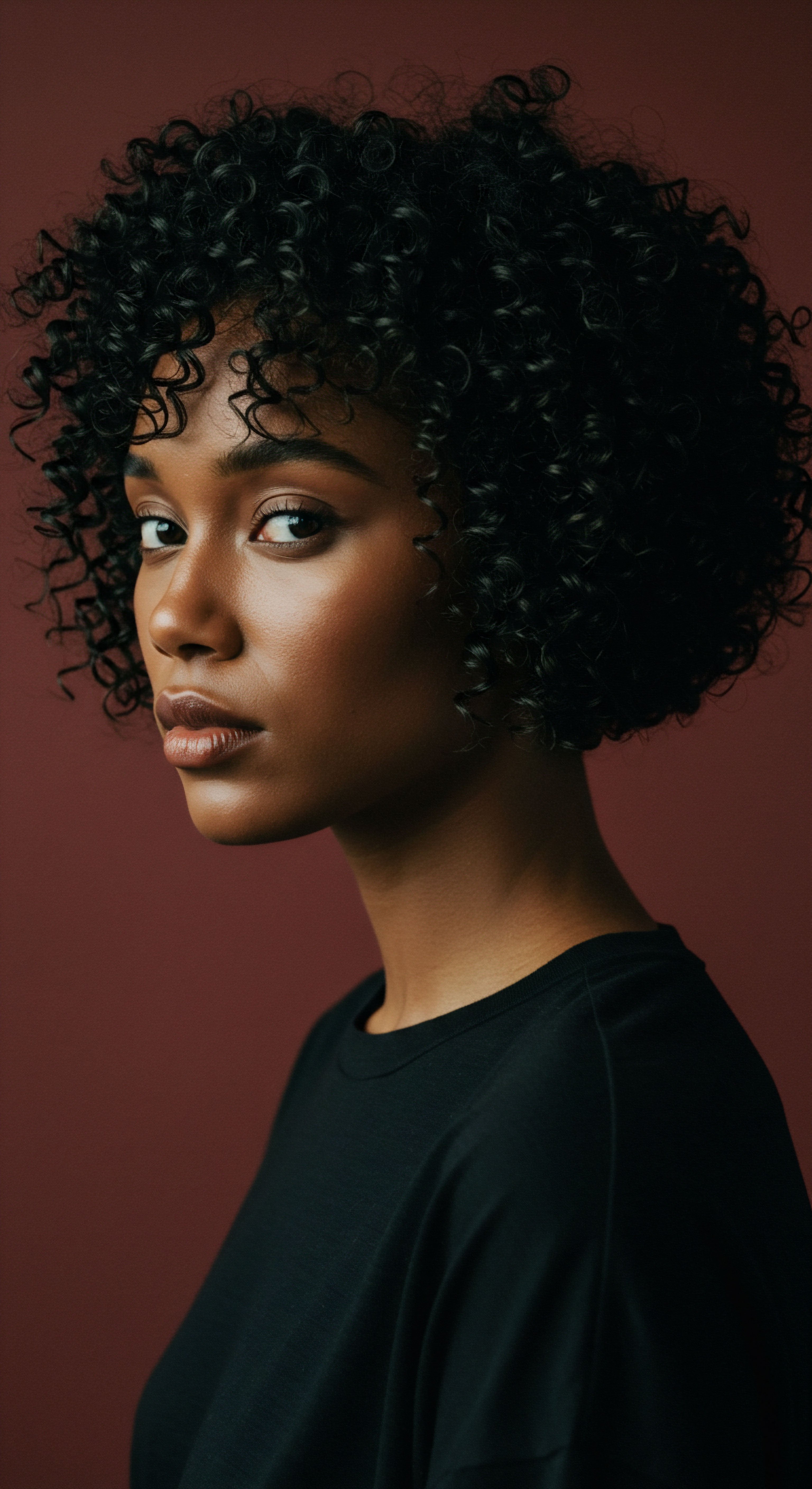
Hormonal Orchestration and Sleep’s Influence
Beyond the direct cellular clockwork, sleep profoundly influences the delicate balance of hormones that regulate hair growth. Two key players in this hormonal symphony are Melatonin and Cortisol.
- Melatonin’s Dual Role ❉ While widely recognized for its role in regulating our sleep-wake cycle, melatonin also plays a direct part in hair biology. It is synthesized not only in the pineal gland but also in the skin and hair follicles themselves. Research indicates that melatonin stimulates hair follicles, helping to prolong the active growth phase and potentially increasing hair density and thickness. When sleep is insufficient or irregular, the natural production of melatonin can be suppressed, potentially weakening its supportive role for hair follicles.
- Cortisol and Stress Response ❉ Sleep deprivation acts as a significant stressor on the body, leading to elevated levels of Cortisol, often referred to as the stress hormone. Chronic high cortisol levels can disrupt the hair growth cycle, pushing a greater proportion of hair follicles into the resting (telogen) phase prematurely, leading to increased shedding, a condition known as telogen effluvium. This mechanism highlights how the psychological and physiological stress of poor sleep directly translates into visible changes in hair density.
| Hormone Melatonin |
| Role in Hair Health Stimulates hair growth, prolongs anagen phase |
| Impact of Sleep Disruption Reduced production, weakened hair follicle support |
| Hormone Growth Hormone |
| Role in Hair Health Essential for cellular regeneration and repair |
| Impact of Sleep Disruption Decreased release, hindering follicle recovery |
| Hormone Cortisol |
| Role in Hair Health Stress response, can disrupt hair cycle |
| Impact of Sleep Disruption Elevated levels, premature telogen phase, increased shedding |
| Hormone Balanced hormonal levels, fostered by adequate sleep, are fundamental for optimal hair follicle function. |
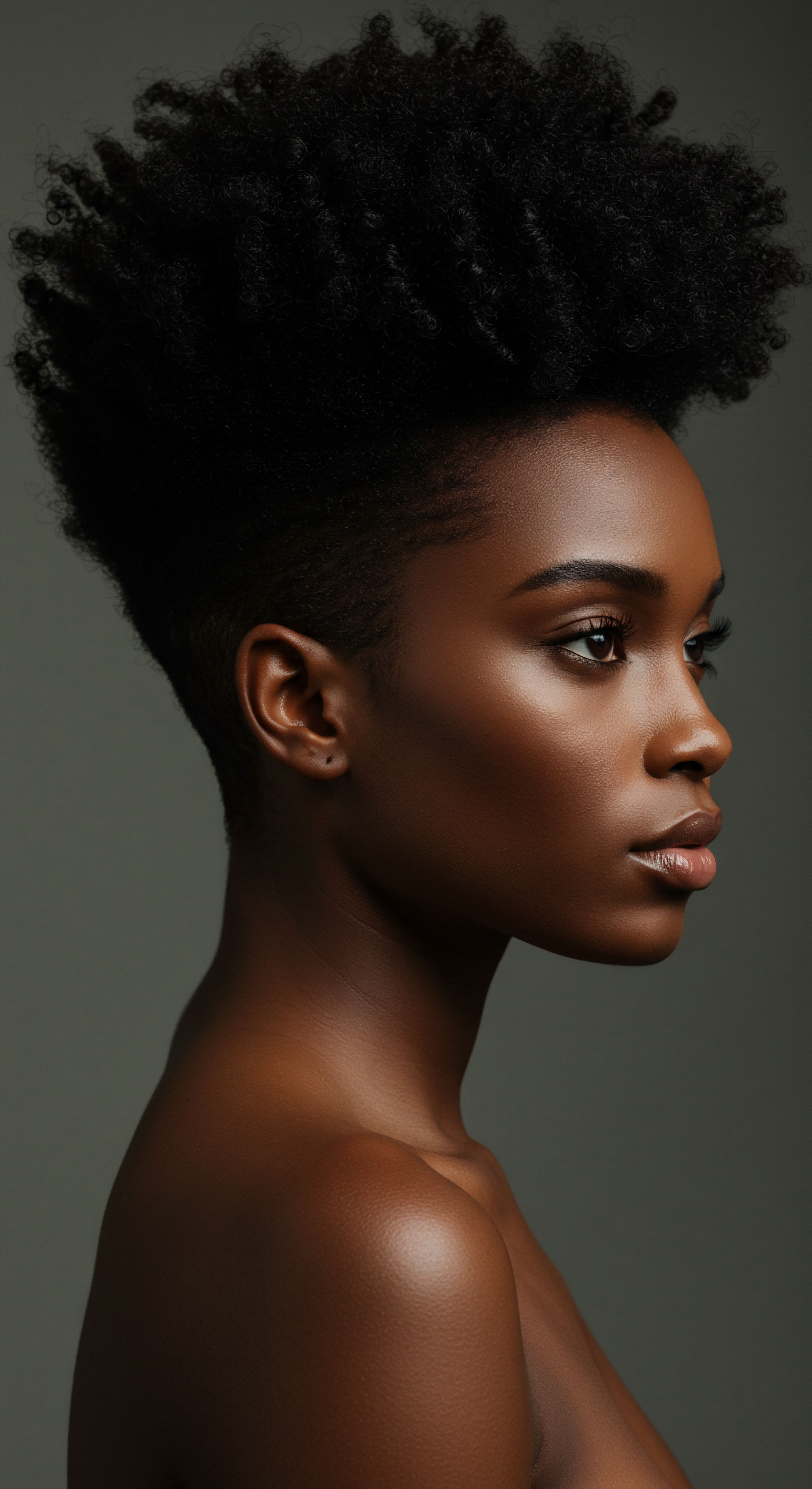
Inflammation and Nutrient Delivery
A restful night allows the body to manage systemic inflammation, a silent aggressor that can compromise hair follicle health. Chronic, low-grade inflammation, often exacerbated by persistent sleep deficits, can create an unfavorable environment for hair growth. This inflammatory state can impair the proper functioning of dermal papilla cells and other critical components of the follicle, impeding their ability to receive and process necessary signals for growth.
Moreover, sleep is a period of optimal nutrient assimilation and delivery. During deep rest, blood flow to the scalp improves, ensuring that vitamins, minerals, and proteins, the building blocks of hair, are efficiently transported to the follicles. When sleep is compromised, this vital delivery system can become less efficient, potentially depriving follicles of the sustenance they require to produce strong, vibrant strands. The impact may be subtle at first, perhaps a slight dullness or reduced elasticity, but over time, it can contribute to more pronounced changes in hair quality and density.
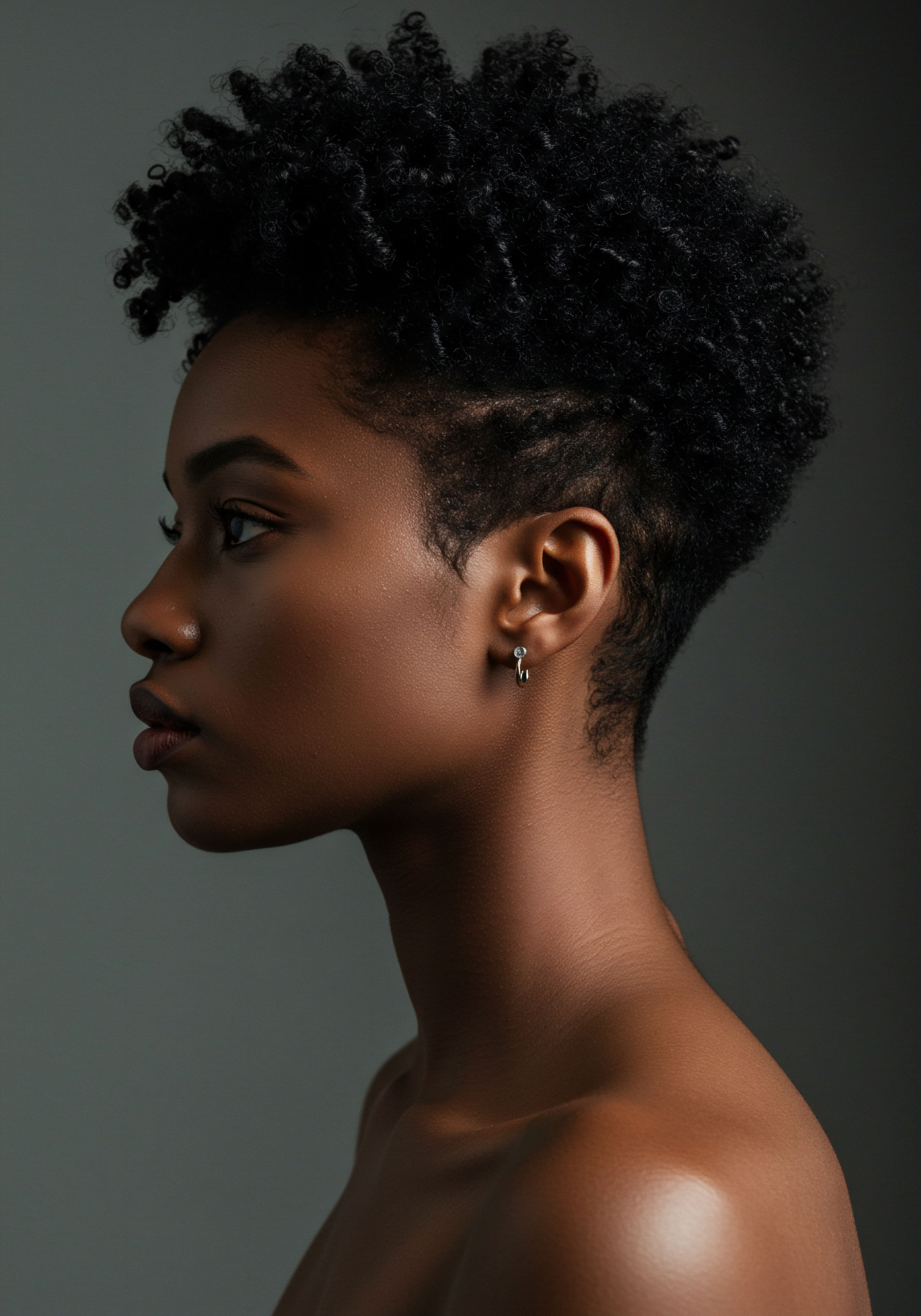
Reflection
As we draw our exploration to a close, it becomes clear that the quiet hours of slumber are far more than a mere pause in our busy lives. They are a profound period of restoration, a time when the unseen mechanisms of our bodies work diligently to renew us, strand by precious strand. Our hair, particularly our textured hair, carries within its very structure the stories of our rhythms, our care, and the deep, silent work of our internal world.
To honor our sleep is to honor the intricate wisdom of our own biology, to tend to the roots of our vitality, and to celebrate the resilience that blossoms from within. May we all find moments of profound rest, allowing our crowns to reflect the deep serenity found in true rejuvenation.

References
- 1. HairFree & HairGrow. (2023). Sleep and Hair Loss ❉ Relationship Explained.
- 2. Hair Doctors. (2025). Can Lack of Sleep Make You Lose Hair? Uncovering the Connection.
- 3. HHC Clinics. (Medically Reviewed by Dr Ali). (2025). Sleep and Hair Growth – What’s the Connection?
- 4. Lin, K. K. et al. (2009). Circadian Clock Genes Contribute to the Regulation of Hair Follicle Cycling. PLoS Genetics.
- 5. Ms.Medicine. (2025). Beauty Sleep Guide ❉ How Sleep Affects Skin & Hair Health.
- 6. Fischer, T. W. et al. (2012). Melatonin and the Human Hair Follicle. Journal of Drugs in Dermatology.
- 7. Uslu, H. et al. (2014). Melatonin Increases Growth Properties in Human Dermal Papilla Spheroids by Activating AKT/GSK3β/β-Catenin Signaling Pathway. PeerJ.
- 8. DiStefano Hair Restoration Center. (2025). Does Sleep Affect Hair Health?
- 9. Scandinavian Biolabs. (2025). Sleep Deprivation and Hair Loss ❉ The Surprising Link Explained.
- 10. LearnSkin. (2017). How Does the Circadian Rhythm Affect Hair Growth?
- 11. HairMD Pune. (2023). Lack of Sleep Can Cause Hair Loss?
- 12. Clinikally. (2024). Impact of Sleep Deprivation on Hair Health.
- 13. Geyfman, M. & Andersen, B. (2010). Clock genes, hair growth and aging. Aging (Albany NY).
- 14. Fan, Y. et al. (2023). Melatonin’s Role in Hair Follicle Growth and Development ❉ A Cashmere Goat Perspective. Animals (Basel).
- 15. Lin, K. K. et al. (2009). (PDF) Clock genes, hair growth and aging. ResearchGate.
- 16. Lin, K. K. et al. (2009). Circadian Clock Genes Contribute to the Regulation of Hair Follicle Cycling. ScienceOpen.
- 17. Wimpole Clinic. (2024). Can Lack of Sleep Cause Hair Loss?
- 18. Liu, L. et al. (2023). Hair Follicles as a Critical Model for Monitoring the Circadian Clock. International Journal of Molecular Sciences.
- 19. GLOWWA. (2023). Beyond Beauty Sleep ❉ The Impact of Sleep on Our Hair.
- 20. DermiMatch Hair Clinic. (2024). Lack of Sleep and Hair Loss ❉ Exploring the Evidence.
- 21. Wimpole Clinic. (2024). Can Lack of Sleep Cause Hair Loss? The Science Explained.
- 22. Chen, Y. et al. (2022). Melatonin-Mediated Circadian Rhythm Signaling Exhibits Bidirectional Regulatory Effects on the State of Hair Follicle Stem Cells. MDPI.